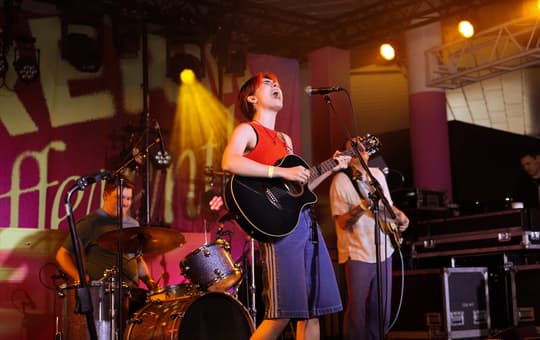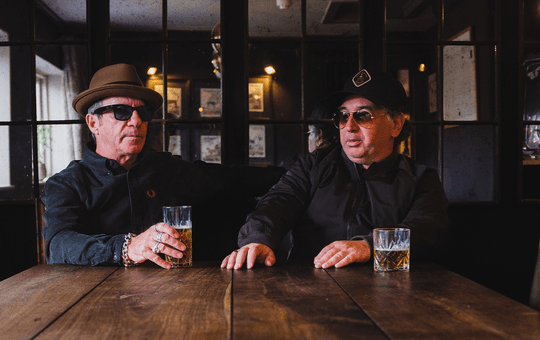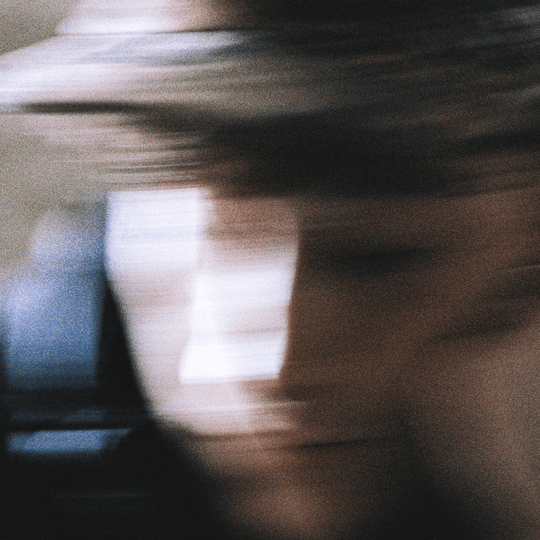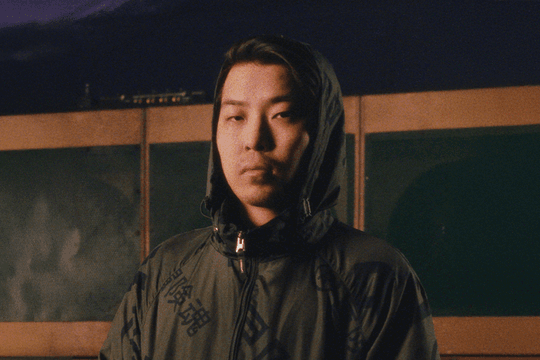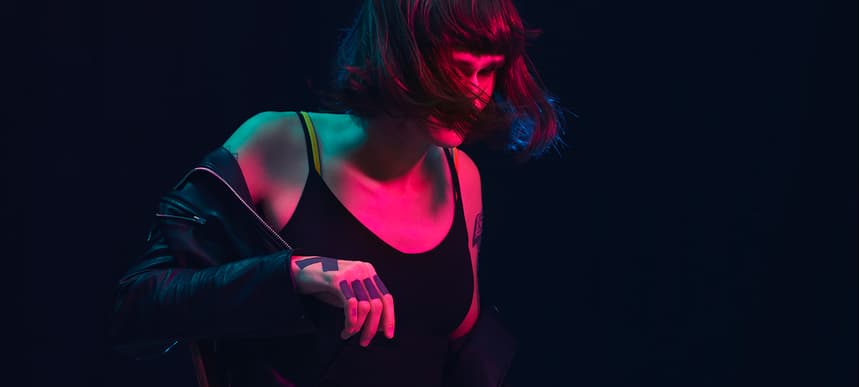
The 10 Best Experimental Japanese Artists, according to Ultrademon
Ultrademon – real name Lilium Kobayashi – is a Kyoto-based artist, who has released music under a variety of aliases over the years. Having emerged with a kind of seapunk aesethetic that ended up inspiring the likes of Azealia Banks, her sound has shape-shifted over the years, finding a home on Rephlex with the now-cult ‘Seapunk’, a scene-defining record.
‘Chamber Music’, her latest record, was written mostly in Tokyo but also in Kyoto, and takes shape as a deeply personal tale from beginning to end. Listening mostly to metal and sub-genres like dungeon synth, black metal, death metal and doom throughout that period, the album expresses the emotions of regret, loss and pain that she was feeling at the time, through sounds that are spacious and clean and feudal track titles.
As a Japan-dwelling artist who likes to uncover exciting leftfield music, we asked Ultrademon to list her favourite experimental Japanese acts. “These songs do have a focus on Kyoto-based artists though some span other parts of Japan,” she says. “I don’t consider this an exhaustive list but rather, ten artists I recommend.”
She also sent this tweet:
It would be nice if just occasionally perhaps music content providers could write about Japanese artists without defining what they do in terms of their nationality.
— Chris SSG (@mnmlssgs) October 30, 2019
“To start off, a younger artist getting some shine right now. He recently played the Discipline party (Bushbash, a venue around Tokyo) among other spots. His works touch on the club atmosphere more than the gallery – that of the ambient art school sound. Here is a clip of him from there performing a section of his recent work ‘Palace’. ‘Palace’ could constitute a ‘deep listening’ work by some metrics. I’ve listened to it many times over. My usual diet of music doesn’t include much electronic music these days, though Hegira Moya makes the cut.”
“I wondered if I should include Sugai Ken since, well, he’s getting a lot of coverage – in fact he recently released a mix via Dummy Mag. But I did want to mention a record that I thoroughly enjoy, especially in the colder months. Seemingly one of Sugai Ken’s most straight ahead works in some way. He captures the feeling of summer evenings in Japan. The sounds of the forest and the insect chirping, all via synthesis of sound. That work is called 如の夜庭.
“In Japan, there are a few species of cicada. Some people get really into their song, as this video shows the songs of the different types of cicada and what months they are active. Feel free to try and figure out which ones Sugai Ken likes.”
丈の低い木の丈は低い from Muku Kobayashi on Vimeo.
“I saw Kobayashi at the BnA Alter Museum, a sort of hipster hotel that features local artists and performance on occasion. His performance was so refreshing. The work is named ‘Shojiki’, where he ‘rewound’ different kinds of tape. The concept is supposed to play with the idea of magnetic tape being rewound in comparison though the effect was the most interesting aspect. The stretching sound of sticky packing tape being wound up on a spiralling mechanism. He and a partner would stretch various types, running around spools to create different frequencies. As the tape wears out, it harkens to the temporality of magnetic tape… well at least this is the concept? The ripping tape sound is an aural treat. As he stretches the tape, I feel he stretches the abstract machines of sound art. I wish I could see more works akin to this – rather than the over-abundant sonic naturalism (field recording works) and most despised in my eyes (yes, it is a fault of mine) oral performance art vein of sound art. i.e. – making mouth sounds into a mic. The body of his works almost completely focuses on the use of slow oscillations on a short curve. Simple oscillator modulations. Manifesting visually (moving video cameras), stretching tape, or automated shifts of simple oscillators.”
“I first discovered Komatsu’s work when returning to the USA from my first Japan tour – long before moving here, back in 2013. Among some gifts I received on my trip, one was a CD labeled ‘Mad Egg’ given to me by someone I performed with. For perhaps two years I pronounced his former moniker MADEGG instead of Mad Egg…
“Anyway, upon my recent move to Kyoto back in April, I was scouring the upcoming gigs and discovered a seemingly and interesting one at a local venue I’d been wanting to check out. It featured some Resident Advisor rated ‘up and coming’ producer or someone… I don’t remember the headliner though the opener left an impression. I didn’t even realise it was Mad Egg under his real name now… though I felt a familiarity. His work spans overt noise experimentation – sparse synth enunciations popping and pinging like a language lost – though the bulk of his works would perhaps be placed within the ‘ambient’ territory.”
“They have collaborated with the likes of Ryuichi Sakamoto (which of course gains major points overseas…) among other things. The three-piece never allows you to hear the fully worked out modulating rhythms and odd time signatures. Eventually, for some brief refrain, it comes together. Though when they are ‘off’ the tension is fucking terrible, though I do like pain… Attempting to produce sound art through vectors outside the pattern system regular band forms.
“They experiment with minute deteritorialisations within the refrains. Essentially it’s all refrain. Three refrains with modulations. Each instrument functions autonomously, though it’s a presupposed feeling. It’s an attempt at battling so to speak – it doesn’t translate to violence, perhaps just confusion at times. Kukangendai runs the venue 外 (Outside, detached, farther beyond) in Kyoto which came from the name of one of their pieces. They moved from Tokyo, and then opened the venue in 2016. They recently premiered their new record ‘Palm’ [above].”
“I first heard P.O.V.’s work on a CD I picked up from the Metal Disk Union shop in Naka Okachimachi. Pilfering through the black metal section I was scouring for something I would find interesting, I come from another time, perhaps, when one would go to the record store as a teen and buy CDs based on finding the cover interesting. Anyway this isn’t 2005, so yes I googled the release on my phone to basically find nothing. I got home and discovered upon opening and listening (there was no text on the outside of the CD) that it was a three-way split EP. Two noise artists and one depressive black metal act. I looked online for this P.O.V. and reached out. The release’s title, I later learned, stands for ‘Penis On Vagina’… so for all the cis het guys who just love guitar pedal distortion and Merzbow this will be your guy… Really though, I do love his work. A bit outside yet straight ahead… and he loves noise. He grew up in Nakano yet currently lives in Oita, near the many hells.”
“Not only breaking the Japanese folk modality at times, Sawai makes profuse use of vibrato on the string. She as such, is an experimental classical Japanese musician. Although I’d like to break this down a bit… in European-rooted music, 12 tone equal temperament is the norm. Since Western music is dominant, for most who are used to this feel anything out side of this tuning feels “out of tune”. Since it is not based on the hegemonic Western 12 tone standard. A koto player using western notation is playing experimentally, in a non-Eurocentric context. Though Western music did permeate and effect Japanese music through the early 20th century. There was even a whole style of imitation western music created by Japanese musicians (for example). Or later on in funk music.
“There is a deep history regarding this – that is for another article… We can see in Japanese pop music there are different modes used. The form here is rooted in Japanese folk music there is an obvious influence. Try and listen for it in J-pop or J-rock, even. Oddly similar to some strains of midwestern emo, though I digress… The point is, even if Sawai’s song sounds traditional to Euro-centric musical ears, her playing western notation on a Japanese folk instrument is experimental. So this brings into question: what defines experimental? Is it defined by the dominant culture? In what context? I bring up many questions and challenge you readers to think about these things when digesting new sounds.”
“Akao’s work invokes not only the spirit of the melancholic mythic topological of Japanese folk, but invites a new view, borrowing from the poetics of modern European and American composition. A classically-trained musician within the ‘Eastern’ and ‘Western’ musical worlds, Akao pays homage to eons old tradition while pushing the boundaries of what is deemed possible with the Japanese flute. She rose to popularity in the ’80s participating in collaborations with pop and funk artists, bringing the Japanese flute to a new audience in a new light. She was trained classically in western modalities and integrated these stylings from the outside within. And a more minimal take. In the ’90s and beyond she shifted to going deeper into the folkloric roots of her instrument, at times collaborating with experimental artists. My favourite of her works is the album “Requiem for Maiden and Young Warrior” song “Legend of the Water Flame”. Unfortunately I could not find a clip of this one online though I did find another one of her works as a reference (above).”
“The event I saw LINEKRAFT at was an outdoor performance of the ROHM theatre in Kyoto. It was sort of in conjunction with the international film festival, though not directly. It was really odd in a way to hear harsh noise and industrial blaring in the middle of the day outside a famous theatre in a sort of museum area of Kyoto. At first I was unconvinced, judging and older generations harking back to some age of industrial I was too young to hear. Deeper into his performance I began to hear it. The cutting high end of him smacking scrap metal attached to a surface mic cut through all the sound more than any other during the whole performance. By the end he had removed his shirt to reveal a traditional tattoo, twisting dragons down his back. The event organisers themselves spoke to bringing out a sort of ancient esoteric energy in everyone. You can read about it (in Japanese) and the group that put it on.”
“Unfortunately I have not seen this group live. Though I have heard of them through friends. They planned a live protest in front of the agency for cultural affairs in Tokyo, regarding the Aichi triennial defunding. The triennial was defunded due to the showing of a piece speaking of the dark history of comfort women. A fact the Japanese government typically denies or tries to sweep under the rug. They have organised other events similar… Honestly I can’t really describe them, but if you are still curious here’s more about them.”
Ultrademon’s ‘Chamber Music’ album is out now via Soft Architecture – find it here.
Read next: The 10 Best Examples of Chinese Instrumentation in Hip-Hop/Pop, according to GZ Tian.

